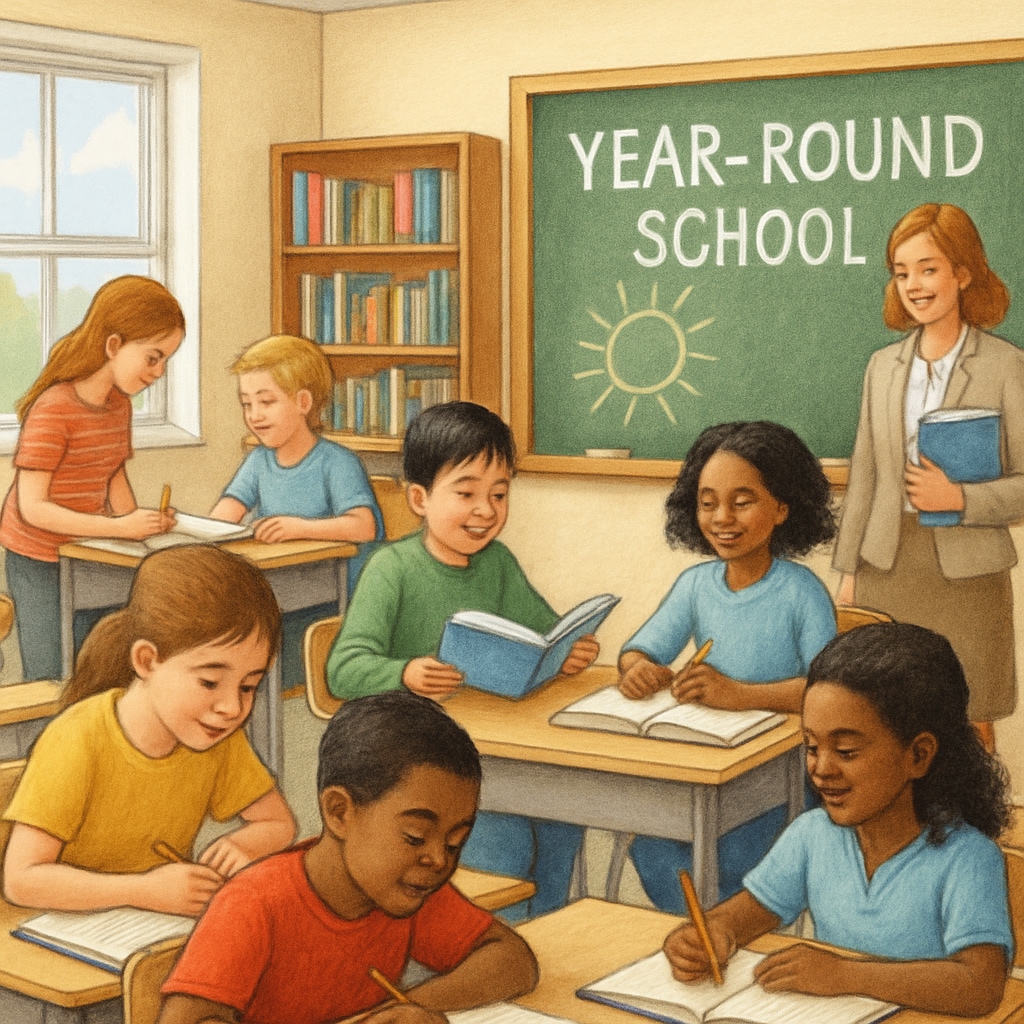Traditional school calendars with long summer vacations often lead to what educators call “summer learning loss,” where students forget a significant portion of what they learned during the previous school year. This phenomenon has prompted discussions about implementing year-round schooling to better support knowledge retention and provide a more balanced and effective learning environment. By replacing the extended summer break with shorter, evenly distributed breaks, year-round schooling can help K-12 students maintain their academic progress while fostering a more consistent learning rhythm.

Breaking the Cycle of “Summer Learning Loss”
Summer learning loss refers to the decline in academic skills and knowledge during long summer breaks, especially in subjects like math and reading. According to research on Wikipedia, students can lose up to two months of academic progress, which disproportionately affects low-income families who often lack access to educational resources during the break.
Year-round schooling, characterized by shorter breaks throughout the year, provides a solution to this issue. For example, a “one week on, one week off” model ensures continuous engagement, preventing extended periods of inactivity that contribute to knowledge erosion. This format aligns well with findings in cognitive science, which emphasize the importance of regular reinforcement for long-term memory retention.
Advantages of Year-Round Schooling
Year-round schooling offers several benefits beyond combating summer learning loss. These include:
- Improved Knowledge Retention: Regular breaks allow students to consistently revisit and reinforce concepts, reducing the risk of forgetting key information.
- Equity in Education: Shorter breaks ensure that disadvantaged students have fewer gaps in access to learning resources, promoting educational fairness.
- Balanced Family Life: The distributed schedule can reduce the stress of long vacations and help families plan their time more effectively.
Moreover, studies such as those featured on Britannica suggest that this model can also alleviate overcrowding in schools by enabling staggered attendance schedules.

Challenges and Considerations
Despite its benefits, year-round schooling does come with challenges. Schools would need to coordinate with families to adjust vacation plans, extracurricular activities, and childcare arrangements. Teachers might also require additional training to adjust their curriculum pacing for the new schedule.
Additionally, some critics argue that year-round schooling might not fully address the learning disparities caused by socioeconomic factors. Effective implementation would require careful planning and community collaboration to ensure all students benefit equally.
Conclusion: A Step Toward Educational Reform
Year-round schooling represents a promising alternative to traditional school calendars, offering solutions to summer learning loss and fostering a consistent learning pace for students. By incorporating shorter, regular breaks, this model supports knowledge retention, educational equity, and family life balance. However, its success depends on thoughtful execution and the willingness of educators, parents, and policymakers to embrace change.
As we look to the future of education, year-round schooling could play a pivotal role in reshaping how we think about learning and growth in the K-12 system.


